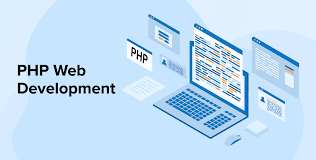In the age of Industry 4.0, industrial automation parts suppliers have evolved beyond simple component vendors, becoming essential enactors of smart manufacturing. A factory now operates as a complex system and an information processing center that is connected at all levels, thus exposing the suppliers to a higher expectation of requirements. A supplier of today’s world is expected to handle multiple aspects starting from digital integration to being eco-friendly, going far beyond simple pricing and lead time conflicts.
This article analyzes the most critical trends that are redefining the industrial automation parts supply ecosystem and suggests approaches to sourcing that are deeper and more strategic for B2B buyers in such complicated environments.
Change Brings New Opportunities: The Focus Shift From Automation Parts Suppliers to Customers Information Management Systems
The most significant and visible change among industrial automation parts suppliers has been the introduction of automated procurement systems. Digital supply chain management further escalates the competition, as companies seek flexible strategies that enable the redesign and improvement of existing business processes.
The cloud logistics platform and IoT sensors, together with real-time data analytics, have become critical to suppliers. These advancements help vendors:
- Restock integral parts in anticipation of demand
- Tracking order status in real time along with sending notifications
- Dispatching critical parts quickly and accurately to minimize downtime
- Last-mile Logistics optimization to improve delays
The other photoelectric sensor vendor digitals supply chains are highly useful when dealing with critical sensitive order timing, or precision capable features as the very rare delay in delivery means halting an entire assembly line.
Streamlined B2B Transactions with e-Commerce and Self-Service Portals
B2B buyers are now accustomed to b2c-level conveniences. Modern industrial automation parts suppliers for example have developed self-service digital interfaces from which their customers can browse, choose, customize, and purchase components with virtually no hassle.
Self-service portals nowadays feature:
- Sophisticated search options for listing parts by type, specifications, and their associated compatibilities.
- Installation guides and CAD models alongside digital data sheets
- Customized volume or contract pricing
- Bulk ordering and quoting functionalities
- Integration with procurement system APIs
All of these changes allow both engineering and procurement to be more efficient and accurate in their work. A good illustration of this is a scenario where the plant manager who wants to purchase photoelectric sensor replacement parts can order them in minutes during the maintenance downtime, courtesy of the intuitive user interfaces and stock level visibility.
Value Provided Services Shift Suppliers Role Upwards
Suppliers used to deliver cardboard boxes filled with parts, and that was it. It is now commonplace for these industrial automation parts suppliers to integrate services such as technical assistance, customized after-sale care, and more. B2B clients no longer expect parts. They expect solutions.
Leading suppliers now provide:
- engineering consultations for selecting parts and system integration;
- on-site complex machinery upgrade or retrofit support;
- machine or product line specific custom kitting;
- pre-configured subassemblies for quicker deployment;
- custom failure analysis and lifecycle management for components with high rates of attrition.
With this greater responsibility, helps make sure that the more delicate parts like sensors, actuators, and controllers are properly integrated. Like when dealing with well trusted photoelectric sensor suppliers, it is easy to integrate these parts into the larger automation framework.
Customization offers personal touch and versatility
For specific types of production – modular or highly specialized, vendors with generic solutions do not meet the company’s requirements. Tailored solutions designed to meet operational, performance, or environmental specifications are becoming essential for manufacturers.
Part suppliers in industrial automation with the relevant customization features are better suited to meet this growing demand. Such requirements include:
- Components capable of withstanding extremely low or high temperatures, or vibrations.
- Sensor casings resistant to dust, moisture, or corrosive chemicals.
- Wiring and connectors that come ready to plug-and-play with appropriate labels.
- Custom-made control interfaces for direct connection to older equipment.
Customization facilitates performance while saving on installation time, which helps scale and adapt complex automation systems more easily over time.
Sourcing and Sustainability Start to Play a Bigger Role
As part of a company’s ESG (Environmental, Social, and Governance) benchmarks, maintaining supply chain sustainability receives a lot of attention. Modern integrated industrial automation suppliers are shifting towards adopting these ideals by implementing greener policies and collaborating with responsible companies.
As a standard practice, these companies also:
- Use low-power compliant parts that meet REACH and RoHS standards.
- Use recyclable materials and reduce packaging waste.
- Use regional distribution centers to reduce transport emission costs.
For example, purchasing from photoelectric sensor vendors who construct long-life, energy-saving sensors can enable green purchasing programs which are aimed at enhancing environmental friendliness.
Final Thoughts: Partnering for Progress in a Smart Manufacturing World
The changes in industrial automation parts suppliers requirements are greatly shifting. With the trend of smart factories, buyers are no longer concerned about cost and availability only. It is now imperative to look at critical supplier attributes such as their level of digitization, their level of technological assistance, their ability to provide specialized solutions, and their sustainability efforts.
Firms aiming to remain relevant in the competing environment in the world should view their suppliers not simply as vendors, but as partners to advance collaboration with. In terms of purchasing PLCs, actuators, or even precision sensors from photoelectric sensor manufacturers, the suppliers surpassing the bare minimum of providing goods play a crucial role in the organization’s ease in adopting smarter, quicker, and eco-friendly manufacturing practices.




